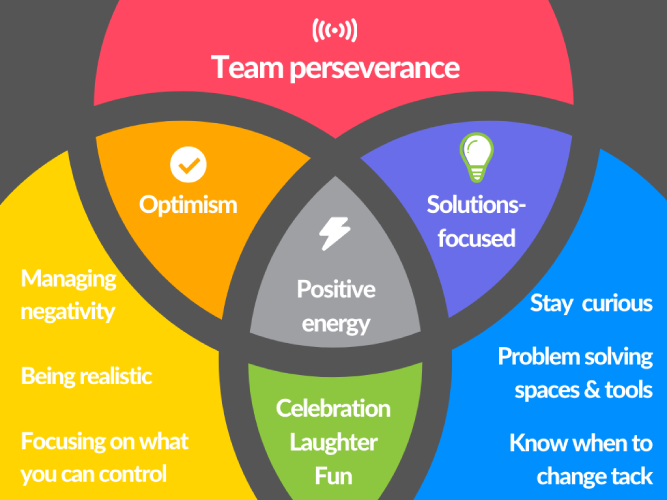Ever worked in a team where you feel that no matter what you do, your ‘face doesn’t fit’ or that you were just a number? Contrast this with the times you have worked in your favourite teams where you felt you felt connected and that you mattered as a person. How do these two situations make you feel?
Resilient teams feel a sense of connection with each other. In the sixth of our 7-day blog on what makes teams resilient, we unpack the importance of team connection as a key ingredient of the team resilience ‘mix’.
What does a ‘connected’ team look and feel like?
In exploring this element of team resilience, the quote below summarise the key elements of team connection:
“Giving connects two people, the giver and the receiver, and this connection gives birth to a new sense of belonging.” – Deepak Chopra
Team connection links to team self-care and very simply a resilient connected team will care for each other as people, acting co-operatively and supportively with each other. When we feel we are a part of something and belong, this in itself builds resilience.
What can we do to build more connected teams?
1.Help people feel that they belong in your team
Being welcoming and inclusive is key but how does this look like in the everyday life of your team? This can range from something as simple as how people greet each other in work to the opportunities you have in your team to sharing time to chat informally and know more about each other as people. What do we do in our team to make everyone feel included? Thinking about everyone’s experience of team life and how they are made to feel part of it is key to belonging.
2. Promote a sense of organisational belonging
Our team is our immediate world in work but how are team members connected to the wider organisation? In many workplaces this can be done from sharing the same uniform, branding through to social events and other workplace programmes any team can connect to. Ensuring team members have some form of connection to the wider work of the organisation helps a sense of belonging.
3. Identify what mutual team support looks like in your team
How do we really help each other out in our team? Really connected teams will easily spot when someone is drowning not waving and readily offer support without being asked. Sample ways we do this, sometimes even without thinking, include:
- Helping a colleague with other work when they have a deadline.
- Debriefing in a safe space if someone has experienced a hard day or difficult incident.
- Sharing knowledge or perspectives you know will help a colleague.
- Advice on how to navigate work politics or systems.
- Just being there as a listening ear for emotional support when the chips are down.
A note of caution here is important. Is an ethos of mutual support shared collectively across the team? If not checked, you may find that naturally accommodating team members will eventually tire if shared support is one-way only with some colleagues; reciprocity is essential for the connected team.
4. Enable ‘confident vulnerability’
Sometimes we carry things too long and struggle because we see asking for help as a sign of our own perceived inadequacies or lack of competency. We may also find ourselves in environments when showing any vulnerability could lead to judgement by others. Or, we may find that feeling below par or not on top of things at work is due to something major happening in our personal lives outside work.
To establish a culture in your team where ‘there’s no such thing as a stupid question’ and where team members feel genuinely comfortable sharing appropriately times of vulnerability takes work and ‘living it’ as modelled by team leaders.
Starting a conversation in your team about areas where they feel aspects of inadequacy and might need help from other team members is a solid starting point.
5. Appreciate that people have lives outside work
Work-life balance featured as a key element of resilience in team self-care in our fourth blog. Things happen in our lives outside work beyond our control which could require flexibility in our team and work life.
A connected team from camaraderie will have some shared knowledge about their colleagues’ lives and demands outside work. During tough personal times, connected teams will accommodate and help colleagues. Teams also however need to set a time limit where they can review flexible support to accommodate the personal to balance team performance and accountability.
However, we all remember those times when colleagues helped us through choppy waters and it is in precisely those times when we feel we are valued and cared for, the bedrock of a connected and resilient team.
To learn more to help your team…
For additional information on how team resilience workshops, team resilience assessment and team coaching could work for your team, click here.
References
Leading for Resilience Workbook, Kathryn McEwen, Working with Resilience







 '
'